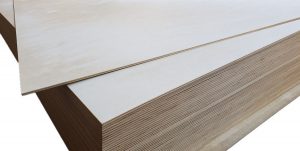Flexible plywood, also known as bending plywood, is a special type of plywood that allows for complex curved surface designs during manufacturing. The flexibility of this material makes it an ideal choice for furniture, architectural decoration, and a variety of applications that require curved surfaces. This article will explore the basic concepts, production processes, and application areas of flexible plywood, and analyze its future development trends and market prospects.
1.Industry definition and classification
Flexible plywood, as a multi-layer composite material, is usually made of multiple layers of materials such as wood or polyester fiber felt spliced together through a specific process. It exhibits high elasticity and excellent pressure resistance in terms of material properties, which makes flexible plywood widely used in many fields, such as shipbuilding and aviation.
In the shipbuilding industry, flexible plywood can meet the high requirements of ship structure for material strength and deformation control with its excellent water resistance and excellent elasticity. Flexible plywood for shipbuilding can not only withstand the test of seawater erosion and bad weather, but also effectively relieve the stress caused by wave impact to ensure the stability and safety of the hull structure.
In the aviation field, flexible plywood has become a key material with its light weight, high strength and fatigue resistance. Flexible plywood for aviation plays an important role in aircraft structural components, interior panels, etc. Its lightweight characteristics help to reduce the overall weight of the aircraft and improve fuel efficiency, while its high strength and fatigue resistance can ensure that the aircraft remains structurally stable under extreme flight conditions. In addition to classification by purpose, flexible plywood can also be subdivided according to performance characteristics. For example, high-strength flexible
plywood has higher tensile strength and impact resistance, and is suitable for occasions that need to withstand greater mechanical stress; while high-elastic flexible plywood has better deformation recovery ability, and is suitable for occasions that require frequent bending and deformation.
As a multi-layer composite material with excellent performance, the application field of flexible plywood is constantly expanding. With the continuous development of material science and the continuous innovation of process technology, it is believed that flexible plywood will show its unique advantages and value in more fields in the future.
2.Price fluctuations of flexible plywood
The market price of flexible plywood is affected by many factors, among which the price of raw materials is one of the more important factors. In recent years, due to the large fluctuations in the price of raw materials in the international market, the production cost of flexible plywood has fluctuated to a certain extent. The intensified market competition and changes in the policy environment have also had a certain impact on the market price. Overall, the market price fluctuations of flexible plywood are relatively small, and the market operation is relatively stable.
The price of flexible plywood fluctuates based on a number of factors, including but not limited to material cost, production cost, market demand, order quantity, and supplier pricing strategy. Based on recent data, here are a few price examples:
Price range for 3mm thick premium flexible plywood bent plywood is about $2.10 to $5.50, and this price is usually for minimum order quantities (such as 24 sheets or more).
For a specific type of 3mm to 6mm thick flexible plywood, the price may be around $3.60, but this also depends on the minimum order quantity, for example, you may need to order at least 400 pieces.
Also, some suppliers offer customized environmentally friendly bendable wood plywood at a price of about $8.20 per sheet, and there is also a minimum order quantity requirement.
Please note that the above prices are for reference only, and the actual price may vary due to market changes, different suppliers, and specific circumstances at the time of purchase.
3.Industry chain structure
The supply chain of the flexible plywood industry involves multiple key links, which are closely linked and together constitute the complete ecology of the industry. In the upstream link, raw material supply and wood processing are the basis of flexible plywood production. High-quality raw materials such as wood and polyester fiber felt play a vital role in ensuring product quality and cost control. The quality and supply stability of these raw materials directly affect the production efficiency of flexible plywood and the performance of the final product. Ensuring the sustainability of raw materials and the stability of supply has become an important task in the upstream link of the flexible plywood industry.
Entering the midstream link, the production and manufacturing process of flexible plywood has high technical requirements. In this link, the cutting, splicing and pressing of the board need to be precisely controlled to ensure that the quality and performance of the product are in the best state. The advancement of production equipment and the maturity of process technology have a decisive influence on improving product competitiveness and reducing production costs. The flexible plywood industry needs to continuously invest in research and development in the midstream link to improve the technical level to meet the growing market demand.
The downstream link is an important source of power for the development of the flexible plywood industry. The wide application of flexible plywood in shipbuilding, aviation and other fields provides it with a broad market space. As the performance requirements for flexible plywood in these fields continue to increase, the flexible plywood industry is also facing more opportunities and challenges. In order to meet market demand, the flexible plywood industry needs to continue to innovate, improve product quality and performance, and strengthen cooperation with downstream companies to jointly promote the healthy development of the industry.
The supply chain of the flexible plywood industry covers multiple links from raw material supply to final product application. Each link plays an important role and jointly promotes the progress and development of the industry. By continuously optimizing the supply chain structure, improving the technical level, and strengthening cooperation and innovation, the flexible plywood industry will usher in a better future.

